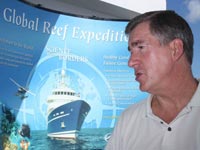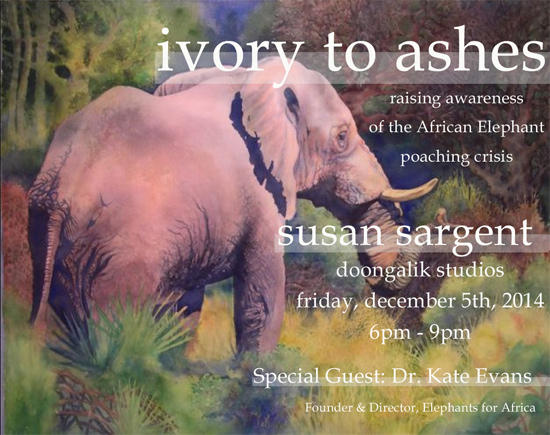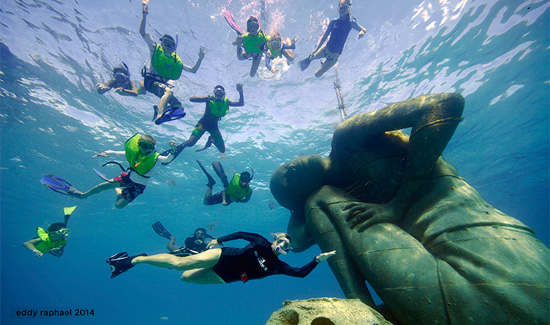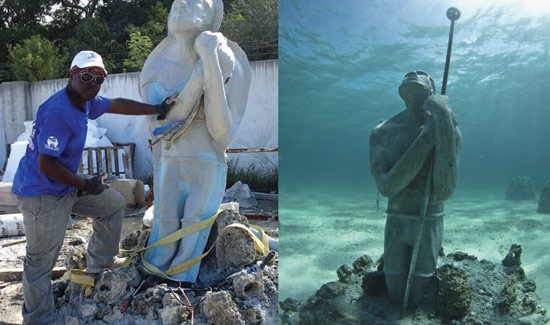
Nassau, The Bahamas – Developing marine environment models would provide the Bahamas Government with information to designate Marine Protected Areas to further order appropriate development that falls within the scope of the 2010 Planning and Subdivisions Act. The Living Oceans Foundation prepares to conduct the same research in 25 countries throughout the global network of Small Island Developing States.
“An expedition of this scale will greatly assist the world in understanding coral reefs, their health and critical role in the environment,” said Prince Khaled bin Sultan, Chairman of the Living Oceans Foundation.
“Our research will produce maps of previously uncharted areas and provide management recommendations urgently needed to preserve these valuable ocean resources. We are involving local scientists in all of our research and exploration.”
Since April 2011, the Global Reef Expedition has mapped coral reef systems in Cay Sal Bank, Hogsty Reef, and the Inaguas, prior to disruptions caused by Hurricane Irene in August. They expect to complete studies in Andros and Abaco to update surveys that were done over 10 years ago.
“The successful and productive coral reef survey and mapping missions we have accomplished during our first year of the Global Reef Expedition could not have been possible without the committed support for our work from the Minister of the Environment, the Department of Marine Resources, Bahamas National Trust, and The Nature Conservancy,” said Captain Philip Renaud, USN (ret), Executive Director of the Living Oceans Foundation.
During the first six months of the expedition, the Foundation’s science team included seven Bahamian researchers, Indira Brown, Jared Dillet, Agnessa Lundy, Lindy Knowles, Olivia Patterson, Krista Sherman, and Tavares Thompson, on board the Golden Shadow to document how the reefs in their country have recovered from coral bleaching events that were first noticed in 1998. They would also be able to identify the abundance, size and health of active corals that build reefs in Andros, which is the third largest barrier reef in the world.
“Our research will lead to improvements in existing habitat maps and will help recent efforts to develop a land and sea plan for the entire island including zoning of sensitive areas,” said Dr. Andrew Bruckner, LOF’s Chief Scientist.
Central Abaco’s coral reef network yielded important time-change information when compared to 1999 surveys. The data helped researchers to understand the human impacts on reef health, due to its proximity to high population density and high user areas. LOF’s oceanography technology has assisted Bahamian researchers with the tools and expertise necessary to explore the potential resources that reside in Bahamian waters.
“The Bahamas, as a nation, is extremely fortunate to have been chosen as the first country in the world-wide study of the health of coral reef environments by the Living Oceans Foundation,” said Eric Carey, Executive Director of the Bahamas National Trust (BNT).
“Young Bahamian scientists from the Department of Marine Resources, Bahamas National Trust and College of The Bahamas have had the opportunity to join the Living Oceans Foundation research team – a once in a lifetime experience. The final leg of the Bahamas Voyage will assess the Andros Barrier Reef and the reefs of the Abaco’s. Both of these areas are critical for the health of Bahamian Fisheries and our larger marine environment. The information generated from the Global Reef Expedition will feed directly into the management of our national parks and marine protected areas.”
By Gena Gibbs
BAHAMAS INFORMATION SERVICES



